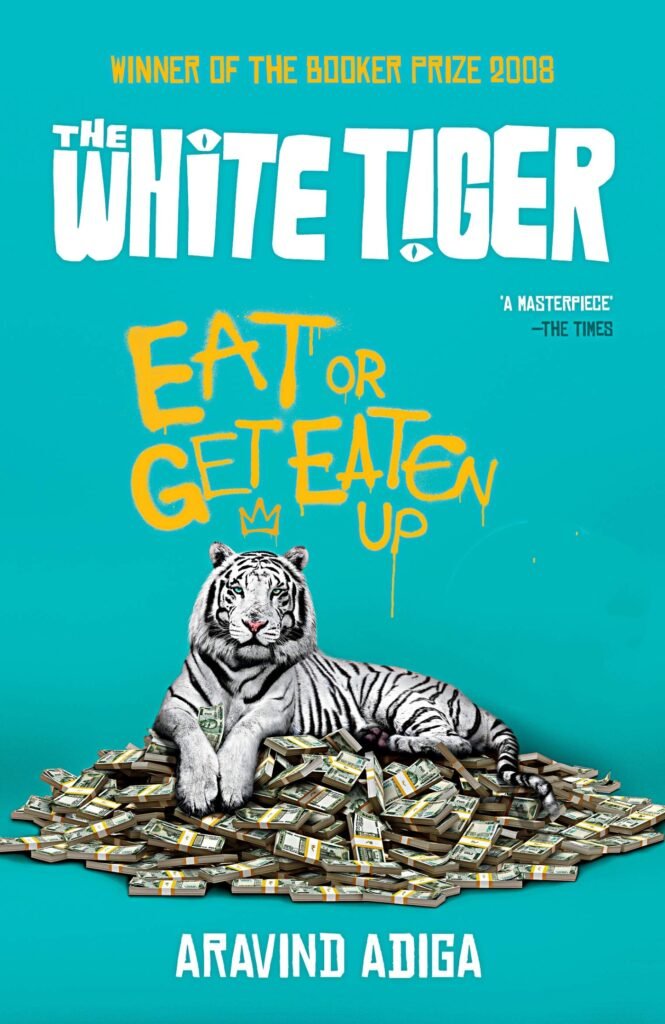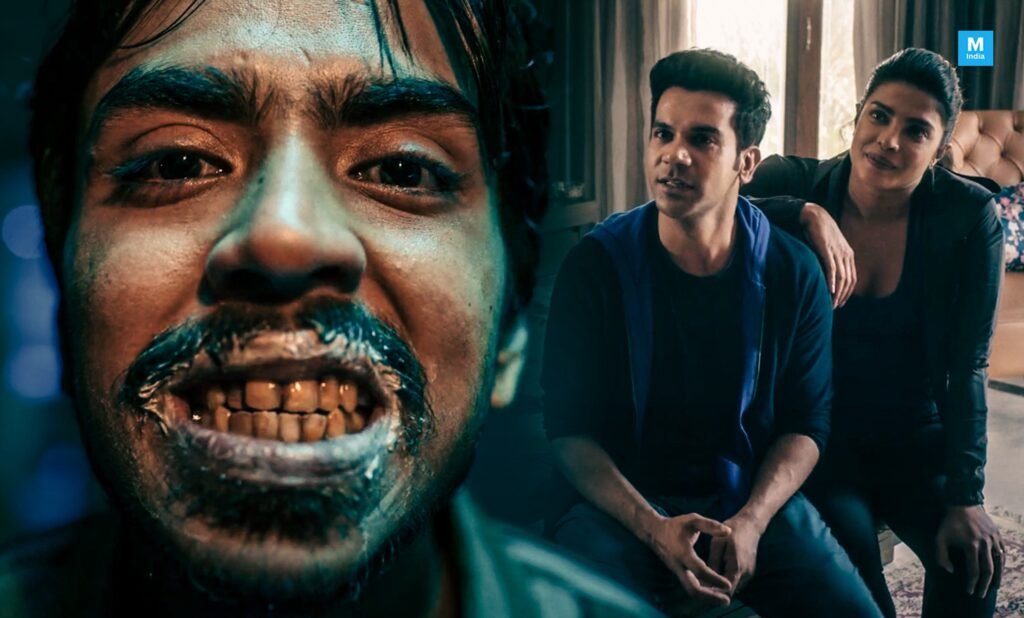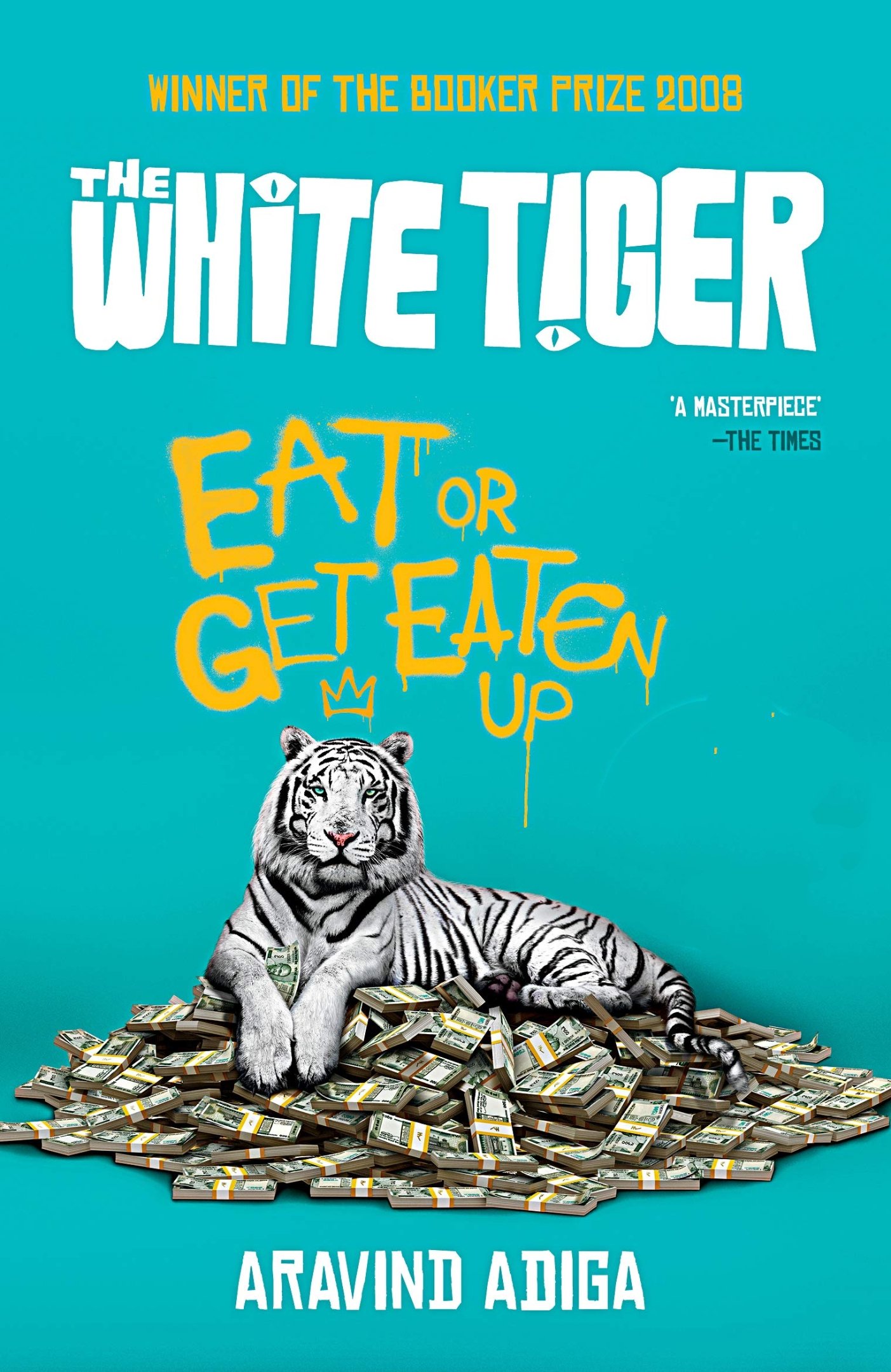The White Tiger Movie Review | Cast, Story, Music & Global Impact

🎭 Cast and Characters in The White Tiger Movie
The White Tiger Movie features a mix of rising stars and established actors, each bringing nuance to this gritty story of ambition and inequality. The casting choices elevate the narrative, making the film more immersive and thought-provoking.
🔹 Adarsh Gourav as Balram Halwai
Adarsh Gourav steals the spotlight with his powerful performance as Balram, a poor villager who transforms into a cunning entrepreneur. This role demanded both vulnerability and ruthlessness—Adarsh delivers both convincingly. His portrayal of Balram’s psychological journey is the film’s backbone.
🔹 Rajkummar Rao as Ashok
Rajkummar Rao plays Ashok, the U.S.-returned, progressive son of a corrupt landlord. He is Balram’s employer and a complex symbol of urban privilege. Rajkummar skillfully depicts a man torn between modern ideals and the legacy of caste supremacy. His performance is subtle but impactful.
🔹 Priyanka Chopra Jonas as Pinky
Pinky, Ashok’s wife, is played by global star Priyanka Chopra. As a U.S.-born Indian woman, she represents both empathy and naivety. Priyanka’s layered acting adds emotional depth to a character that serves as Balram’s moral compass early on.
🔹 Supporting Cast
Veteran actors like Mahesh Manjrekar and Vijay Maurya appear in pivotal supporting roles. Mahesh plays the domineering landlord with an air of menace, while Vijay portrays Balram’s brother with raw intensity. Each minor role helps enrich the world the film creates.
This ensemble cast manages to present India’s stark social divisions with realism. Their interactions reveal layers of power, resistance, and survival.
🎶 Music and Soundtrack of The White Tiger Movie
While The White Tiger Movie is not a traditional Bollywood musical, its soundtrack still plays a crucial role in setting the tone. The music is a blend of raw, urban energy and meditative ambience, reflecting the duality of Balram’s world.
🎼 Composer and Style
The background score is composed by Danny Bensi and Saunder Jurriaans, who are known for scoring tense, character-driven dramas. They use minimalist instrumentation—mostly strings and atmospheric synths—to match the film’s gritty tone. Their music mirrors Balram’s internal tension and evolution.
🎧 Soundtrack Highlights
The film also features a selection of curated tracks from Indian hip-hop and global artists. These songs are not just fillers but thematic enhancers. Tracks by Divine and RAK showcase rebellion, urban chaos, and survival, echoing Balram’s emotional arc.
Notable inclusions:
- “Jungle Mantra” by Divine ft. Vince Staples & Pusha T
- “O Murari Re” – a nostalgic nod to rural India
Each track amplifies the narrative—whether highlighting a moment of oppression or a glimpse of freedom.
🎤 Lyrics and Relevance
The lyrics are bold and fearless. From rhymes about street struggle to lines that question inequality, the soundtrack captures the voice of a rising underclass. These songs give rhythm to Balram’s awakening and enhance the storytelling without overpowering it.
Overall, the film’s music doesn’t seek commercial appeal—it enhances psychological realism and builds atmosphere effectively.
🌟 Performances and Acting Reviews
In The White Tiger Movie, performance is everything. The actors do more than deliver lines—they embody themes of resistance, manipulation, and aspiration.
🔸 Adarsh Gourav’s Breakout
Adarsh Gourav deserves every accolade for his role as Balram. His performance is raw and layered—from his wide-eyed servitude to the cold steel of his later persona. Adarsh internalizes Balram’s trauma, masking it with false humility. Critics worldwide have praised this as a career-defining role.
His eyes do most of the talking—especially in scenes where fear and calculation collide. It’s a masterclass in restraint and rage.
🔸 Rajkummar Rao’s Control
Rajkummar Rao brings authenticity to Ashok, making him relatable yet frustrating. His portrayal of a man caught between privilege and guilt is subtle, with just the right amount of emotional confusion. He doesn’t overpower but carefully supports the dynamic with Balram.
🔸 Priyanka Chopra’s Subtle Spark
Priyanka Chopra shines in a supporting role that is crucial. As Pinky, she brings warmth and conscience to the story. Her American accent and casual tone contrast the Indian rigidity around her—adding cultural tension to her scenes. While not the lead, her presence is magnetic.
🎬 Supporting Performances
Even minor characters stand out, especially Balram’s grandmother (Kamlesh Gill), whose strict values frame Balram’s early life. Mahesh Manjrekar brings menace, and Vijay Maurya delivers intensity. These performances create a lived-in world full of social tension.
Every actor in the film fits into a bigger picture—of oppression, hierarchy, and rebellion. Their realism grounds the larger message of the film.
✍️ Dialogues and Writing Style in The White Tiger Movie
The screenplay of The White Tiger Movie, written by Ramin Bahrani and based on Aravind Adiga’s novel, is sharp, darkly humorous, and brutally honest. The dialogue cuts through social hypocrisy and exposes the rot beneath India’s economic success.
🗨️ Writing Tone
The voiceover-driven narration by Balram (Adarsh Gourav) is sarcastic, confessional, and unfiltered. His inner monologue provides commentary not just on events, but on India itself. The tone is rebellious, often mocking the wealthy while exposing their dependence on those they exploit.
🧠 Sharp One-Liners & Insights
The script is full of quotable lines that stay with you.
Examples:
- “The white man has wasted himself; now it’s our turn.”
- “In the old days, there were one thousand castes. Now there are just two: men with big bellies, and men with small bellies.”
These lines are more than clever—they’re social critiques hidden in storytelling.
📝 Adaptation of Novel
Bahrani’s adaptation remains faithful to the core of Adiga’s Booker Prize-winning novel but strips away excessive subplots for tighter storytelling. The result is a screenplay that is fast-paced and haunting. It captures the psychological tension of class mobility with precision.
The writing is unapologetic, sometimes uncomfortable. That’s its strength—it doesn’t sugarcoat.
📣 Release and Promotion Strategy
The release strategy of The White Tiger Movie was unconventional and global-first. Rather than a traditional cinema rollout, the film was positioned for streaming audiences worldwide. This helped it gain massive international attention.
🌍 Netflix Premiere
The film was released globally on Netflix on January 22, 2021, skipping Indian theaters due to pandemic restrictions. This ensured a wider reach, especially in non-Hindi speaking countries. It quickly trended in the Top 10 in several regions, including the U.S. and U.K.
🎤 Festival Buzz
Before the official release, the film premiered at several international film festivals and private screenings. These early reviews helped build credibility among critics. The buzz was strong around Adarsh Gourav’s performance, drawing comparisons to Slumdog Millionaire’s Dev Patel.
📺 Star-Powered Promotion
With Priyanka Chopra as both actor and executive producer, the film got major traction in global media. She appeared on late-night shows, gave interviews in the West, and leveraged her brand to promote the film as a “new voice from India.”
📲 Digital Marketing
The trailer release was backed by a sharp social media campaign. Tweets, memes, and trailers emphasized the rebellious tone of the story. Netflix India and global handles promoted it heavily with hashtags like:
- #TheWhiteTiger
- #BalramHalwai
- #NetflixIndia
The film’s digital-first release was not a compromise—it was a strategy that paid off, making the movie a global conversation starter.

💰 Box Office and OTT Streaming Performance of The White Tiger Movie
Unlike typical Bollywood blockbusters, The White Tiger Movie was not designed for theatrical earnings. It was a Netflix Original, and its success was measured through global streaming impact rather than box office numbers.
📉 No Traditional Box Office Data
The film did not have a traditional theatrical release in India or abroad. It premiered directly on Netflix in January 2021 due to the COVID-19 pandemic. This meant no ticket sales or weekend earnings reports, yet the film reached millions across continents.
📈 Streaming Success
Within days of its release, The White Tiger Movie became one of the most-watched films on Netflix globally. It made it to the Top 10 list in over 60 countries, including:
- United States
- United Kingdom
- Australia
- Canada
- India
It remained in Netflix India’s Top 10 for several weeks, showing its strong hold on domestic audiences.
🌍 Global Viewership
The film gained major traction in non-Indian markets, especially among Western audiences who had previously seen Slumdog Millionaire. Netflix doesn’t release exact numbers, but reports from media outlets like Deadline and Variety indicated tens of millions of views in the first month.
This global viewership surpassed what a typical theatrical release could achieve, especially for a film with dark, socially charged themes.
🧾 Cost and ROI
With a moderate budget and no large-scale production costs due to limited action and practical sets, the return on investment was strong. Netflix acquired global streaming rights, securing profits for the producers and creators before the film was even released.
In essence, The White Tiger Movie proved that global digital releases can rival traditional theatrical runs, especially for character-driven dramas.
🌍 Critical and Public Reception of The White Tiger Movie
Reception for The White Tiger Movie was overwhelmingly positive from both critics and audiences, especially for its fearless themes, compelling performances, and social commentary.
📰 Critical Reviews
Major film critics across the world applauded the film’s raw narrative and direction.
Highlights include:
- Rotten Tomatoes: 91% approval rating
- Metacritic: Score of 76/100
- The Guardian: “An electrifying adaptation with breakout performance by Adarsh Gourav.”
- The New York Times: Named it a Critic’s Pick, calling it “a furious, funny, and thrilling story.”
Ramin Bahrani was praised for staying true to the novel while making it visually and emotionally engaging for screen. The film’s unflinching portrayal of India’s underclass, without romanticizing poverty, was seen as a breakthrough.
👥 Audience Response
Indian audiences had mixed but mostly positive reactions. While many praised its honesty and courage, some criticized its portrayal of Indian society as too negative for a global audience.
In contrast, international viewers appreciated the deep dive into the class system. It was especially popular among:
- Students of social studies and politics
- Viewers interested in global cinema
- Fans of realistic dramas
The dialogues, Balram’s voiceover, and the narrative twists kept viewers engaged. Discussions around the ending and Balram’s choices trended on platforms like Reddit and Twitter.
🎥 Social Media Impact
The film became a conversation starter about privilege, caste, capitalism, and personal ambition. Hashtags like #TheWhiteTiger and #BalramHalwai trended for weeks, and memes based on Balram’s narration flooded Instagram.
This reception showed that The White Tiger Movie wasn’t just watched—it was discussed, debated, and remembered.
🧠 Cultural Impact and Public Response
Beyond reviews and ratings, The White Tiger Movie made a significant cultural impact—especially in how Indian society is represented in global media. It pushed boundaries and started real conversations.
🔎 Exposing the “Rooster Coop”
The film popularized the metaphor of the “Rooster Coop”—a concept that critiques how the poor are mentally conditioned to remain subservient. This became symbolic in media discussions, academic debates, and youth dialogues.
Students, professors, and activists began referencing the term while discussing class systems, modern slavery, and wage gaps—not just in India, but globally.
🌐 Global Recognition of Indian Inequality
For international viewers, the film provided a brutally honest look into India’s hidden realities—something rarely seen in big-budget Bollywood. Unlike romanticized poverty in earlier films, this movie exposed exploitation as a system, not an accident.
This cultural shift allowed for more honest storytelling in Indian cinema on global platforms.
💬 Discussions on Social Hierarchy
The story ignited debates around:
- Casteism in modern India
- The cost of breaking social barriers
- Urban vs. rural power dynamics
- The moral cost of ambition
These conversations reached classrooms, podcasts, and editorial columns worldwide.
📚 Book Sales & Literary Impact
The film also revived interest in Aravind Adiga’s 2008 novel. Book sales soared after the movie’s release, and it was re-listed on bestseller charts in several countries.
In sum, The White Tiger Movie reshaped how Indian class stories are told—and who listens to them.
🎬 Comparisons with Similar Movies
The White Tiger Movie has often been compared to a few global and Indian films due to its themes of poverty, survival, and rebellion. But it sets itself apart with its tone, character depth, and unapologetic storytelling.
🔁 Slumdog Millionaire
This is the most obvious comparison. Both films:
- Show an underdog rising from the slums
- Highlight India’s class divide
- Use stylized narration
Differences:
While Slumdog Millionaire feels more optimistic and cinematic, The White Tiger is darker, angrier, and far more critical of the system. Balram isn’t a victim of fate—he takes control, even if it means crime.
🔁 Parasite
Another frequent comparison, especially because both were Oscar contenders. Parasite explores class tension in South Korea, while The White Tiger explores it in India. Both involve:
- A servant/master dynamic
- Themes of betrayal
- A tragic twist
Key Difference:
Parasite uses thriller elements and class symbolism, while The White Tiger is rooted in real-world India and uses first-person narration as a weapon.
🔁 Gully Boy compared with White tiger movie
While Gully Boy is a musical coming-of-age story, it shares similar themes of:
- Breaking out of poverty
- Fighting the system
- Self-expression through rebellion
But The White Tiger is far more cynical. Balram isn’t trying to win respect—he’s trying to win freedom, even at the cost of morality.
🔁 Serious Men
This Nawazuddin Siddiqui-starrer also explores how a lower-class man manipulates the system for personal gain. Both protagonists use lies, but while Serious Men leans toward satire, The White Tiger hits harder with its moral ambiguity.
Overall, The White Tiger Movie is part of a growing wave of Indian cinema that dares to ask difficult questions about inequality—without asking for forgiveness.
🏆 Awards and Recognition for The White Tiger Movie
The film was not just critically acclaimed—it also received significant recognition from major award bodies and film festivals around the world.
🎥 Academy Awards (Oscars)
The White Tiger Movie was nominated for Best Adapted Screenplay at the 93rd Academy Awards in 2021.
This nomination marked an important moment for Indian literature-to-screen adaptations and brought global attention to Adarsh Gourav and Ramin Bahrani.
🎖️ BAFTA Awards to white tiger movie
Adarsh Gourav was nominated for Best Actor in a Leading Role at the BAFTA Awards 2021, making him one of the few Indian actors to receive such recognition on a global stage.
🏆 Other Major Honors
- AACTA Awards: Won Best Asian Film
- Writers Guild of America: Nominated for Best Adapted Screenplay
- Independent Spirit Awards: Nominated for Best Male Lead (Adarsh Gourav)
- Critics Choice Awards: Nominated for Best Adapted Screenplay
🇮🇳 Indian Recognition
Although it received less attention from mainstream Indian award shows (likely due to its non-theatrical release), it was honored at:
- Filmfare OTT Awards
- Screenwriters Association of India events
The recognition this film earned helped cement its place as a landmark in global Indian storytelling—bold, international, and fearless.
📝 Conclusion and Final Thoughts on The White Tiger Movie
The White Tiger Movie is not just a film—it’s a bold statement. It challenges the traditional “rags-to-riches” narrative by showing what it truly costs to escape the cage of poverty. Balram Halwai isn’t your usual Bollywood hero; he’s a rebel, a survivor, and a mirror to a deeply divided society.
Ramin Bahrani’s direction, adapted from Aravind Adiga’s Booker Prize-winning novel, brings raw energy to the screen. The storytelling is unapologetic, the performances are unforgettable, and the social commentary is razor-sharp. Adarsh Gourav’s portrayal of Balram is a revelation—he embodies rage, hope, and cunning in equal measure.
This film strips away the glamor of India’s rising economy and asks the uncomfortable questions:
- Who gets to dream?
- Who gets left behind?
- And what must one sacrifice to escape servitude?
It doesn’t offer easy answers or uplifting resolutions. Instead, it forces us to reckon with reality—and that’s what makes it powerful.
Whether you’re watching it for its gripping narrative, strong performances, or to understand the underbelly of ambition in modern India, The White Tiger Movie delivers on every front. It is a cinematic roar against systemic oppression—urgent, intense, and unforgettable.

visit now our other review ⚠️🚨⚠️ Tribhanga Movie :Review Story, Cast, Performances.



